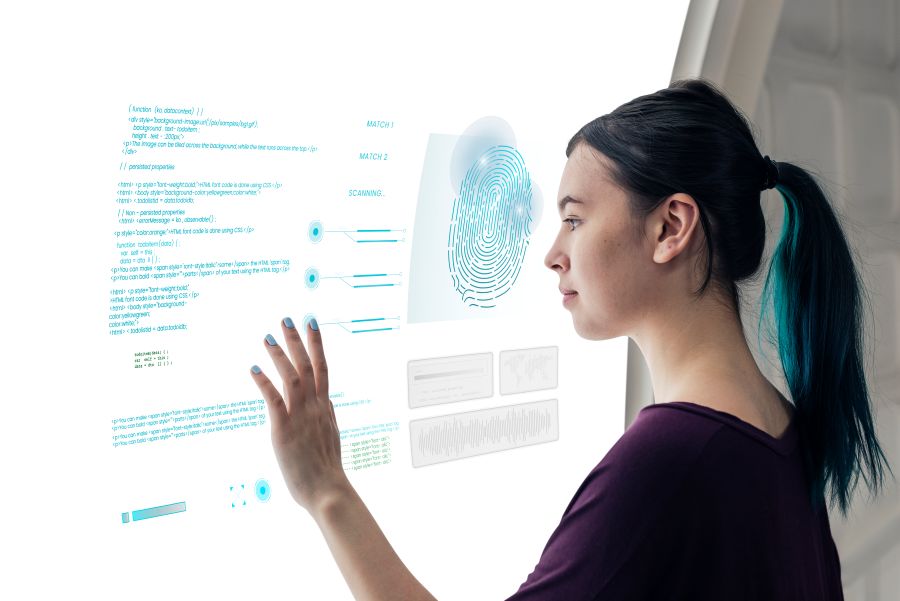AI-Powered Hacking Techniques for Cybersecurity Professionals
AI hacking techniques have given an upper hand to professionals with regards to the latest tools for effective detection and prevention of cyber threats. Using AI-enabled security solutions, cybersecurity teams can automate vulnerability scanning, analyze large datasets for suspicious patterns, predict potential threats, and identify anomalies in network behavior before hackers exploit them.
In an era where hacker job trends are constantly evolving, staying ahead requires adopting AI security advancements. In this blog, we will discuss these AI hacking techniques that give an idea of a hacker’s approach to identifying weaknesses before malicious actors do.
Let’s get started!
Key AI Techniques Used in Ethical Hacking
Let’s explore some of the most effective AI hacking techniques that cybersecurity professionals can utilize to strengthen their defenses.
1. Anomaly Detection
AI algorithms analyze vast amounts of network traffic and user behavior data, establishing a baseline of “normal” activity. Any significant deviations from this baseline are flagged as potential threats, allowing for proactive security measures.
For example, if a system usually records 1,000 login attempts per hour but suddenly detects 10,000 login attempts from unusual IP addresses, AI will flag this as an anomaly, likely indicating a brute-force attack. Another example is detecting unauthorized access to sensitive files outside normal working hours.
2. Machine Learning-Based Vulnerability Scanning
Traditional signature-based scanning has limitations. AI models, trained on vast databases of known vulnerabilities, can identify weaknesses, including previously undiscovered zero-day exploits.
Consider a scenario where a new vulnerability appears in a widely-used web framework. AI models can promptly scan all systems utilizing that framework to evaluate risks even before a patch is released, drastically enhancing response times compared to traditional manual scanning techniques.
3. Behavioral Analysis
AI-enabled security solutions monitor user activity, system processes, and data access patterns. By creating a behavioral baseline for each user and system, AI can detect unusual actions that might signal a cyberattack.
For instance, if an employee typically accesses company files between 9 AM and 5 PM but suddenly downloads massive amounts of data at 3 AM from an unknown location, AI can flag this as a potential insider threat or account compromise.
4. Predictive Analytics
AI hacking techniques leverage historical attack data, threat intelligence, and current trends to predict future cyber threats. This allows security teams to proactively bolster their defenses and allocate resources effectively.
For example, an AI system analyzing recent phishing trends and social media activities may predict an upcoming wave of attacks targeting a specific industry, enabling security teams to educate employees and enhance email filtering protocols before the attacks materialize.
5. Automated Penetration Testing
Penetration testing is essential for identifying security vulnerabilities, and AI can automate much of this process, making it faster and more efficient.
AI-driven penetration testing tools can simulate different attack scenarios, automatically probing systems for weaknesses, and generating reports detailing vulnerabilities along with remediation suggestions, streamlining cybersecurity efforts.
6. Adversarial Machine Learning
Adversarial machine learning focuses on understanding how attackers bypass security defenses and using this knowledge to improve resilience against sophisticated threats.
For example, researchers might develop AI models that craft highly deceptive phishing emails capable of bypassing existing spam filters. This insight allows cybersecurity teams to train AI models to recognize and block such attacks more effectively.
How Cybersecurity Professionals Can Use AI-Powered Hacking Techniques
Proactive Threat Hunting: AI algorithms analyze network traffic, user behavior, and system logs to detect anomalies and potential threats before they can be exploited.
For example, an AI system might detect unusual data exfiltration patterns from a specific user account, flagging it as a potential insider threat, even if traditional security alerts are not triggered.
Rapid Incident Response: AI security advancements enable automated detection, analysis, and response to security incidents, significantly reducing the time needed to contain and mitigate attacks.
For example, when a phishing email successfully compromises an employee’s account, AI can automatically isolate the affected device, reset passwords, and notify the security team, preventing further damage.
Vulnerability Assessment Optimization: AI prioritizes vulnerabilities based on severity, exploitability, and potential impact, allowing security teams to focus on the most critical issues first.
For instance, an AI-powered vulnerability scanner may identify multiple issues in a web application but prioritize those that are easily exploitable and likely to result in data breaches, ensuring efficient resource allocation.
Advanced Malware Detection: AI hacking techniques enhance malware detection by analyzing behavior, code patterns, and network activity to identify new and unknown threats.
For example, an AI-driven antivirus program can detect a new malware strain by monitoring its behavior in a sandbox environment, identifying malicious activities such as encrypting files or establishing remote connections.
Phishing Attack Simulation: AI generates realistic phishing emails to test user awareness and train employees on recognizing phishing attempts.
For example, an AI-powered platform can create customized phishing emails that mimic real-world attacks, targeting employees based on their roles and behavior. This approach helps identify individuals who are more susceptible to phishing and provides targeted training to enhance overall security awareness.
The Future of AI in Cybersecurity
As AI security advancements continue to evolve, cybersecurity professionals must stay updated on the latest AI hacking techniques and integrate them into their security strategies.
The arms race between hackers and defenders will only intensify, making AI-enabled security an essential component of modern cybersecurity frameworks. Using AI-driven tools, organizations can proactively identify and mitigate cyber threats, ensuring robust protection against evolving attacks.
To stay updated, resort to AI+ Ethical Hacker Certification from AI CERTs and lead the cybersecurity landscape.




